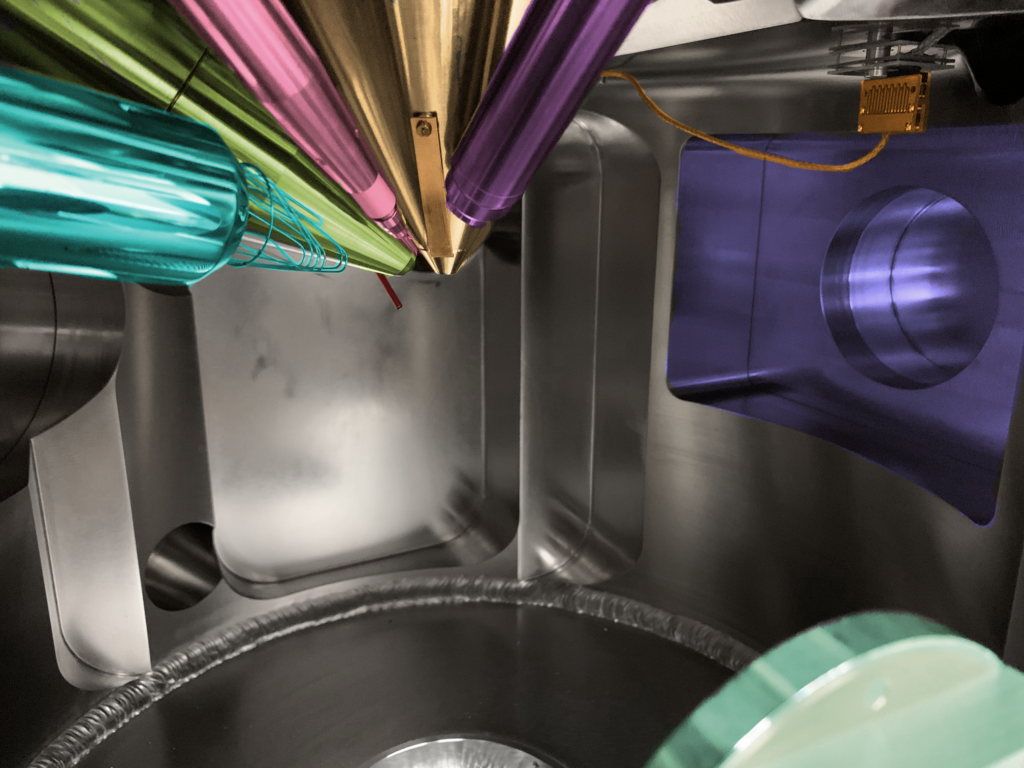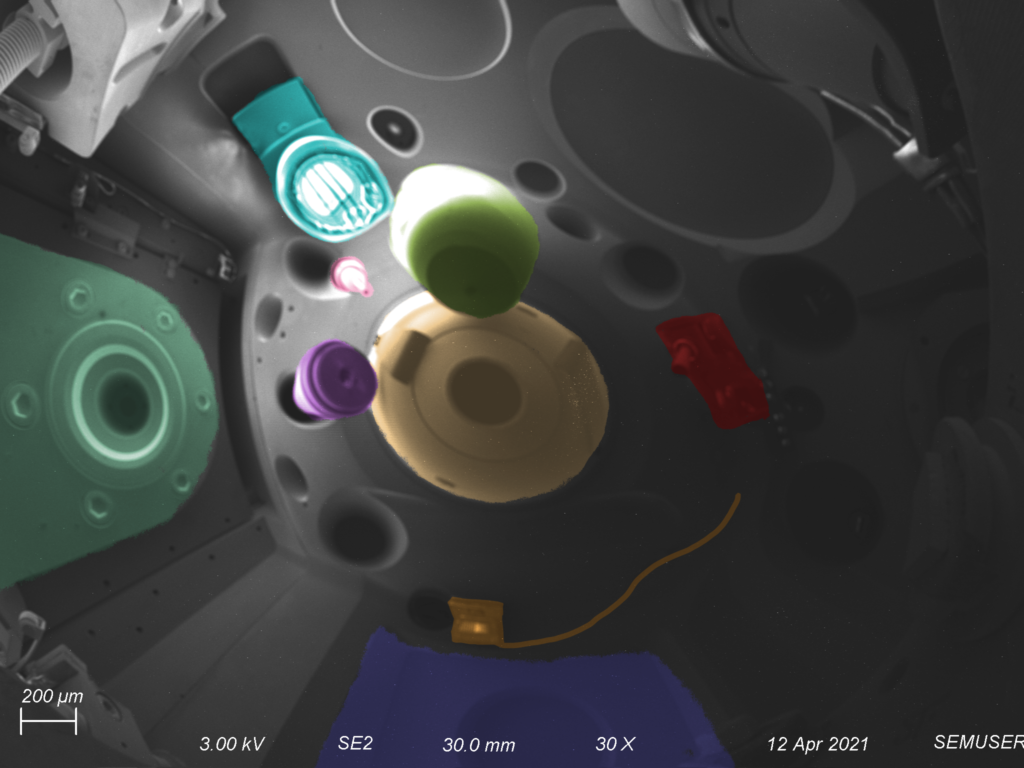

Abstract
The Electron Mirror Effect is a phenomenon which takes advantage of the typically avoided effect of charging to produce an electric field which will deflect the primary electron beam, producing a mirror which will cause the imaging of its surroundings instead of its own surface. Electron mirrors can be produced from any material which is isolated from ground, allowing a voltage potential build up on the surface when charged with a high-energy electron beam. Fabrication and empirical studies of different materials and physical topographies of these mirrors are conducted in order to observe what properties result in a high-resolution mirror with minimized distortion in imaging. These include material studies of polypropylene, polyethylene terephthalate, Teflon, polyimide, and platinum and topography studies on disk, planar rectangular, convex spherical, and concave spherical Teflon mirrors. Experiments at high voltage and charging over different charge areas are reported as well. The development of electron mirrors has applications in reflective imaging, but also has the potential to revitalize the advancement of the field of electron microscopy and produce other unique applications such as introducing dimensions to electron beam lithography and potentially creating electron equivalents of optical systems.


